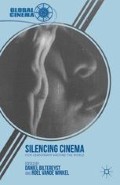Abstract
In Giuseppe Tornatore’s Cinema Paradiso (1988), a nostalgic look at growing up in a small Sicilian village, the local movie theater dominates the social life of the town. Everyone went to the movies for entertainment, information, excitement, and romance. But at least one person feared the power and influence this modern entertainment had on the villagers: the local priest. The priest insisted on previewing and censoring the films before they contaminated his flock with the infectious immorality of the outside world. The priest insisted that every screen kiss be removed. As one frustrated villager complained: “I haven’t seen a kiss in 20 years!” The experience of watching Cinema Paradiso, while humorous, was shared by movie fans worldwide. Convinced that films were capable of seductively changing the moral and ethical values of audiences, censors and moral guardians from Sicily to Hollywood fought to control the content of movies.
Access this chapter
Tax calculation will be finalised at checkout
Purchases are for personal use only
Preview
Unable to display preview. Download preview PDF.
Notes
Jowett, G. (1989) “A Capacity for Evil”: The 1915 Supreme Court Mutual Decision, pp. 59–78 in Historical Journal of Film Radio and Television, 9 (1). See also Chapter 2.
Black, G. (1994) Hollywood Censored: Morality Codes, Catholics and the Movies. New York: Cambridge University Press, pp. 37–40.
Black (1994), pp. 51–60.
Black (1994), p. 162.
Walsh, F. (1996) The Catholic Church and the Motion Picture Industry. New Haven: Yale University Press, pp. 82–83.
Black, G. (1989) Hollywood Censored: The Production Code Administration and the Hollywood Film Industry, 1930–1940, pp. 167–189 in Film History, 3 (3).
Leff, L. & J. Simmons (1990) The Dame in the Kimono: Hollywood, Censorship, and the Production Code. New York: Grove Weidenfeld, pp. 42–43.
Doherty, T. (2007) Hollywood’s Censor: Joseph I. Breen & the Production Code Administration. New York: Columbia University Press, p. 70.
Black (1994), p. 183.
Walsh (1996), pp. 100–105. See also Facey, P. W. (1974) The Legion of Decency: A Sociological Analysis of the Emergence and Development of a Social Pressure Group. New York: Arno Press
Skinner, J. (1993) The Cross and the Cinema: The Legion of Decency and the National Catholic Office for Motion Pictures, 1933–1970. Westport, Conn.: Praeger.
Black, G. (1998) The Catholic Crusade against the Movies. New York: Cambridge University Press, p. 26.
Black (1998), p. 28.
Black (1994), pp. 223–230.
Black (1998), p. 37.
Jowett, G. (1976) Film: The Democratic Art. Boston: Little, Brown, pp. 344–350.
Black (1998), p. 131. For earlier criticism of Hughes, see Quigley, M. (May 28, 1932) Hughes and Censorship, p. 17 in Motion Picture Herald.
Variety, March 20, 1946, p. 20.
Los Angeles Daily News, April 4, 1946 in The Outlaw, PCA Files, Margaret Herrick Library, Academy of Motion Picture Arts & Sciences (AMPAS), Beverly Hills, Calif.
Variety, May 15, 1946, p. 12 and May 22, 1946, p. 22.
Lee, S. C. (1985) Pending Catholicization: The Legion of Decency, Duel in the Sun and the Threat of Censorship, M.A. Thesis, University of Texas-Austin, p. 16.
“boff b.o.” means “outstanding box Office” in Variety lingo. Variety, January 1, 1947,p. 14.
Father John Devlin to Rev. Patrick J. Masterson, October 4, 1947, box 57, Archdiocese Archives of Los Angeles, Mission Hills, CA.
Selznick to Scanlon and O’Shea, February 8, 1947, box 596, David O. Selznick Papers, University of Texas.
Crowther, B. (1951) The Strange Case of “The Miracle,” pp. 35–39 in The Atlantic Monograph, 187.
Burstyn v. Wilson, 343 US 495 (1952), pp. 17–18. For a larger discussion of this case, see Westin, A. (1961) The Miracle Case: The Supreme Court and the Movies. Tuscaloosa, Alabama: University of Alabama Press
Wittern-Keller, L. & R. J. Haberski (2008) The Miracle Case: Film Censorship and the Supreme Court. Lawrence: University Press of Kansas
Johnson, W. B. (2008) Miracles & Sacrilege: Roberto Rossellini, the Church and Film Censorship in Hollywood. Toronto: University of Toronto Press. See also Chapter 2.
Balio, T. (1976) The American Film Industry. Madison: University of Wisconsin Press, p. 405.
Black (1998), pp. 206–207.
Quigley to Spellman, July 27, 1953, The Moon Is Blue, National Legion of Decency Archives [hereafter as LOD Archives], Archdiocese of New York, New York, New York.
See The Moon Is Blue, PCA. United Artists and Holmby Productions v. SydneyR. Traub, et al., Baltimore Docket 295, Folio 16, December 7, 1953.
Connell, F. (1946) How Should Priests Direct People Regarding Movies?, p. 245 in American Ecclesiastical Review, 114. See also Connell to Little, April 19, 1954, box 1, Martin Quigley Papers, Georgetown University, Washington, DC.
Kelly, G. & J. Ford (1957) The Legion of Decency, pp. 387–433 in Theological Studies,18.
Black (1998), pp. 145–146.
See also Biltereyst, D. (2011) Censorship, Negotiation and Transgressive Cinema: Double Indemnity, Some Like It Hot and Other Controversial Movies in the United States and Europe, pp. 145–159 in McNally, K. (ed), Billy Wilder, Movie-Maker. Jefferson: McFarland & Comp.
Little to McNulty, March 4, 1959 and McNulty to Eric Johnston, March 4, 1959, Some Like It Hot, LOD Archives.
Ibid.
Eric Johnston to Bishop McNulty, March 18, 1959, Some Like It Hot, Ibid.
47th Annual Meeting of the Bishops, pp. 60–65, NCCB.
Sullivan to Hyle, June 16, 1966, Virginia Woolf, LOD Archives.
Leff & Simons (1990), p. 274.
Walsh (1996), p. 323.
Editor information
Copyright information
© 2013 Daniel Biltereyst and Roel Vande Winkel
About this chapter
Cite this chapter
Black, G.D. (2013). The Legion of Decency and the Movies. In: Biltereyst, D., Winkel, R.V. (eds) Silencing Cinema. Global Cinema. Palgrave Macmillan, New York. https://doi.org/10.1057/9781137061980_15
Download citation
DOI: https://doi.org/10.1057/9781137061980_15
Publisher Name: Palgrave Macmillan, New York
Print ISBN: 978-0-230-34081-7
Online ISBN: 978-1-137-06198-0
eBook Packages: Palgrave Media & Culture CollectionLiterature, Cultural and Media Studies (R0)

